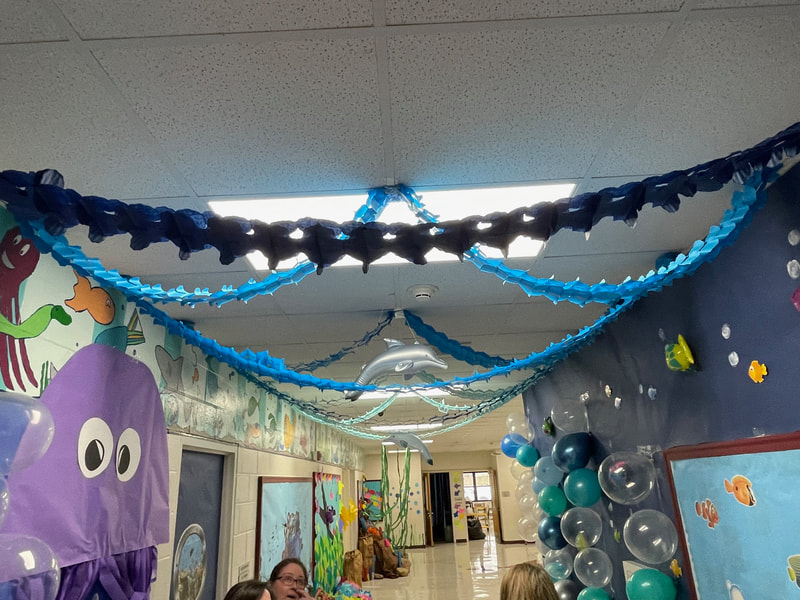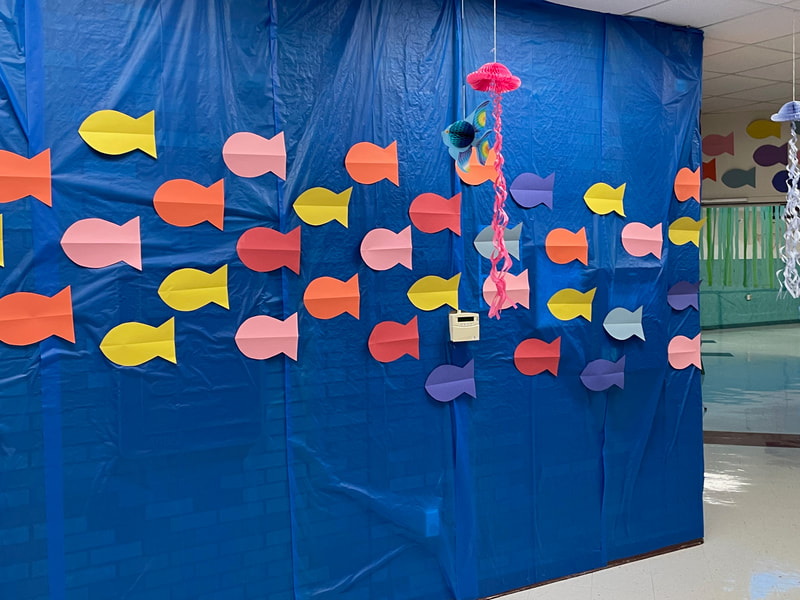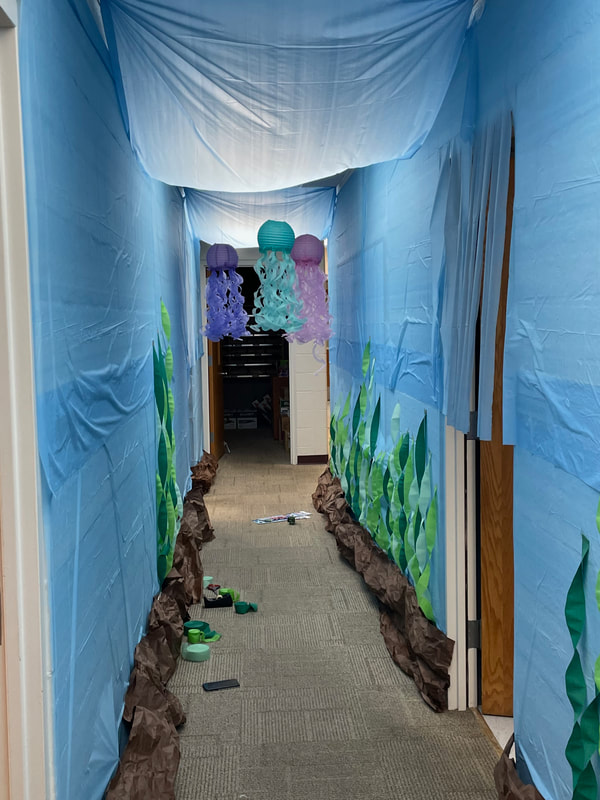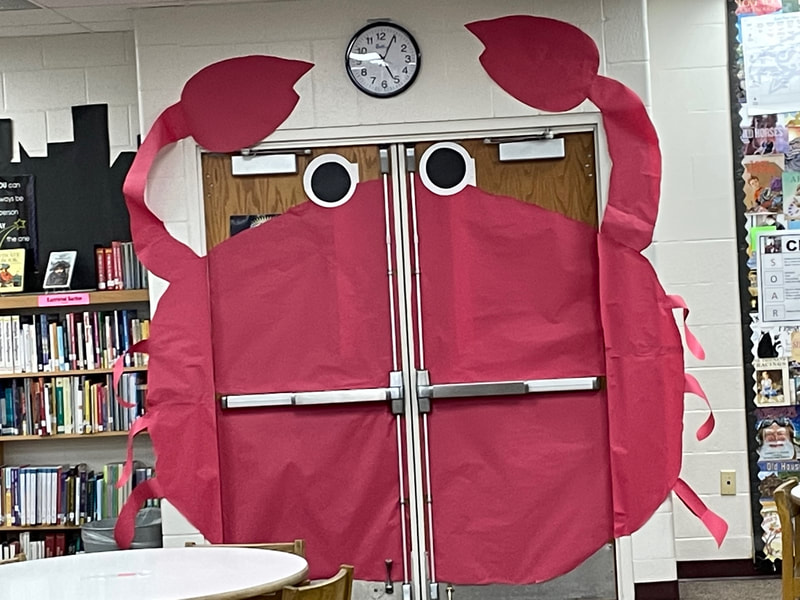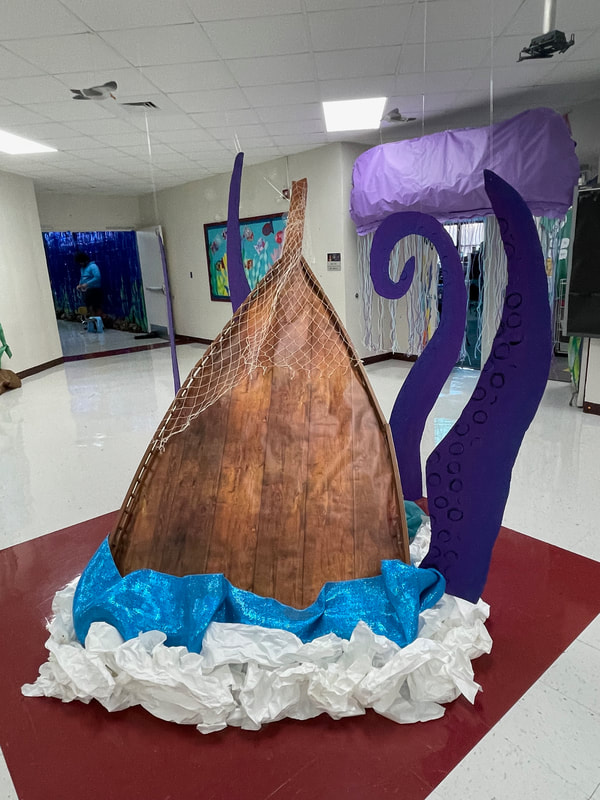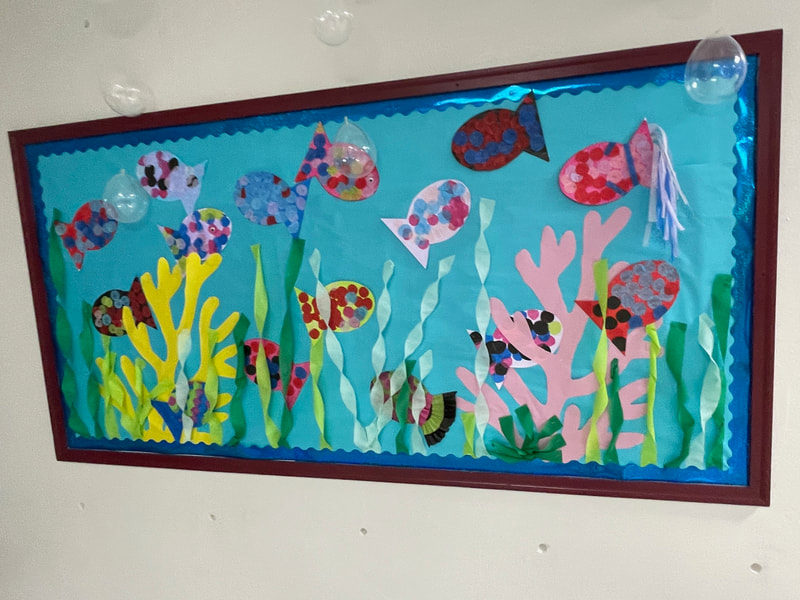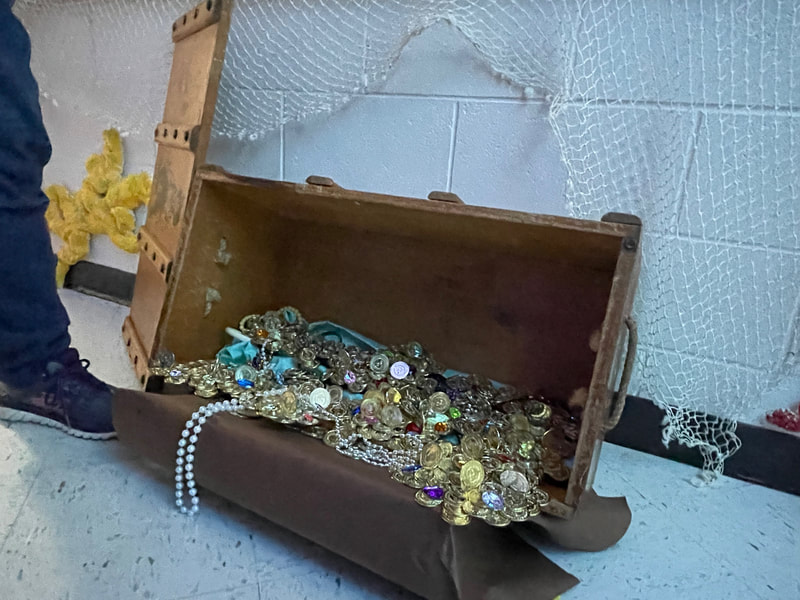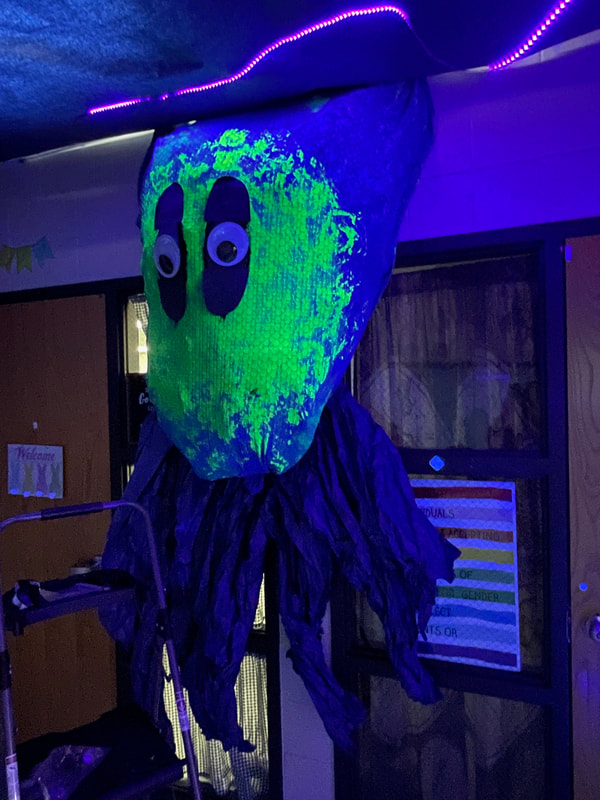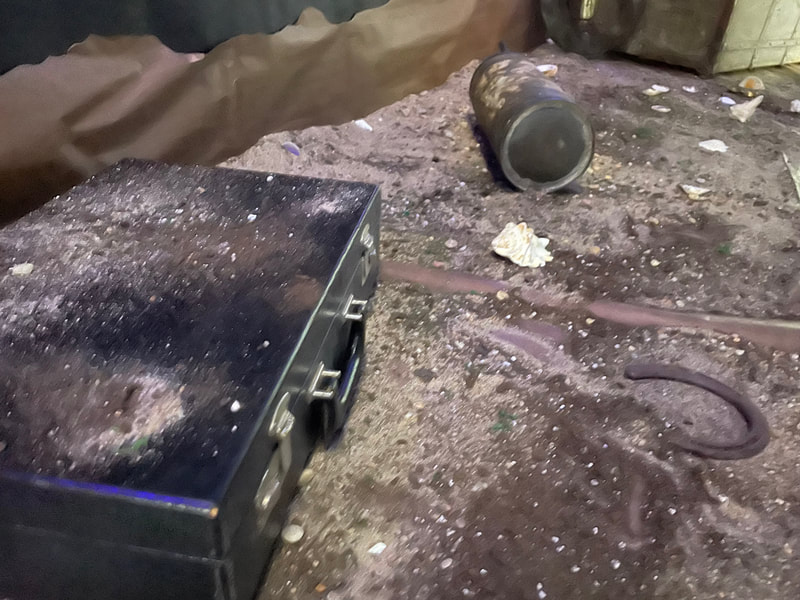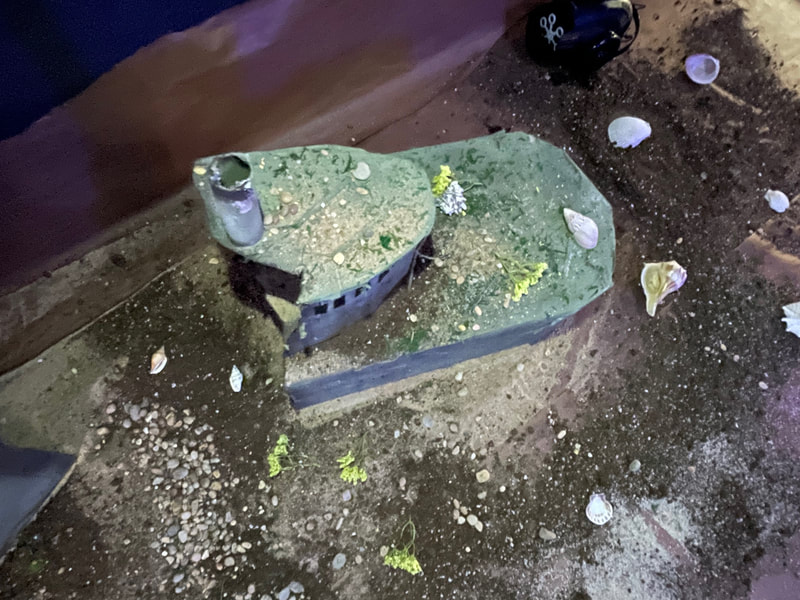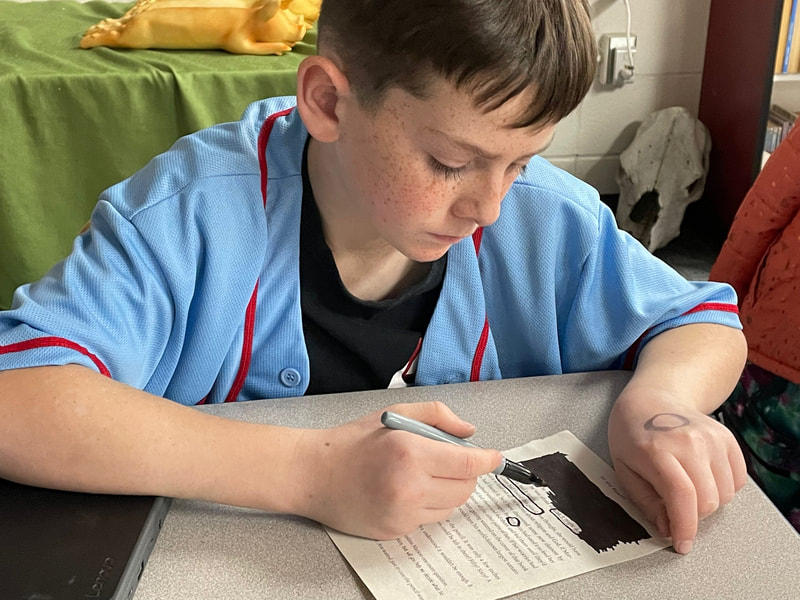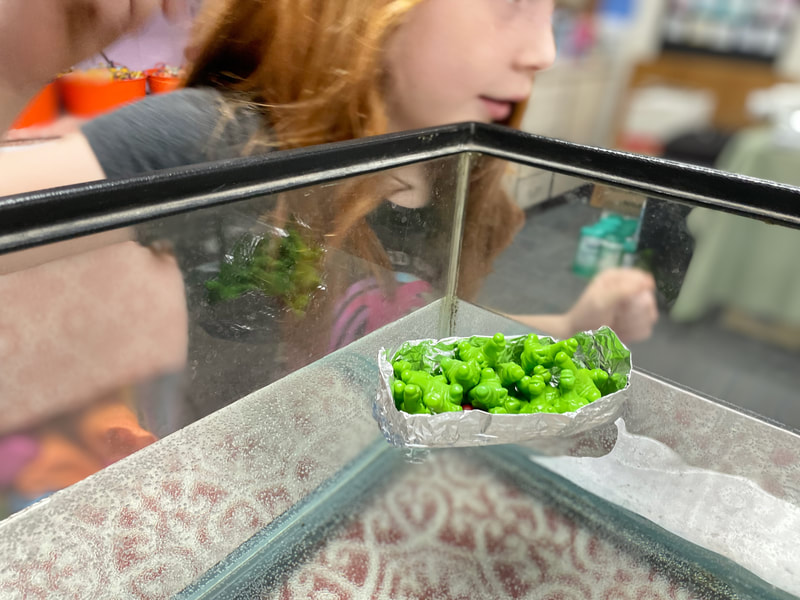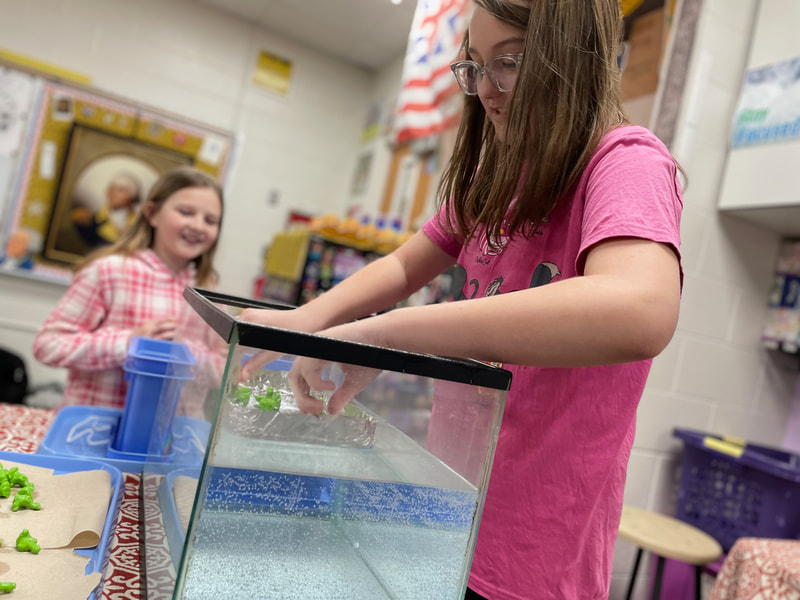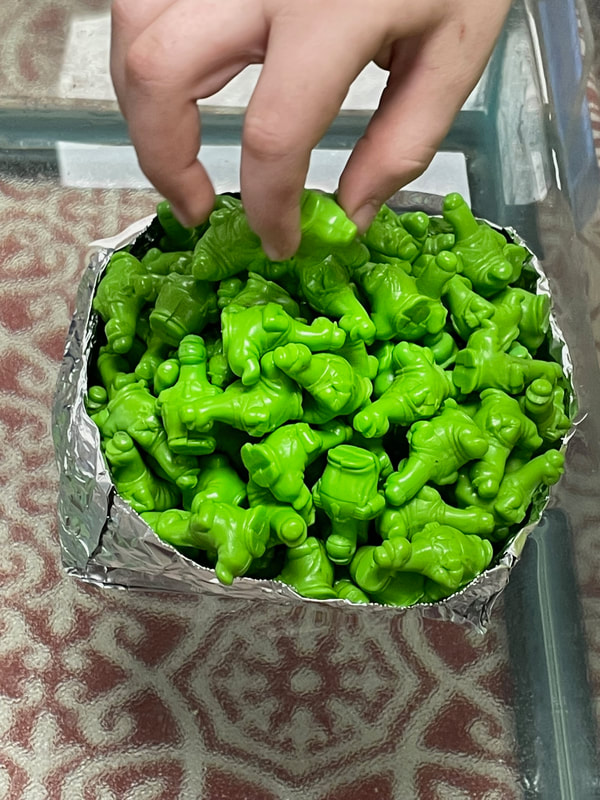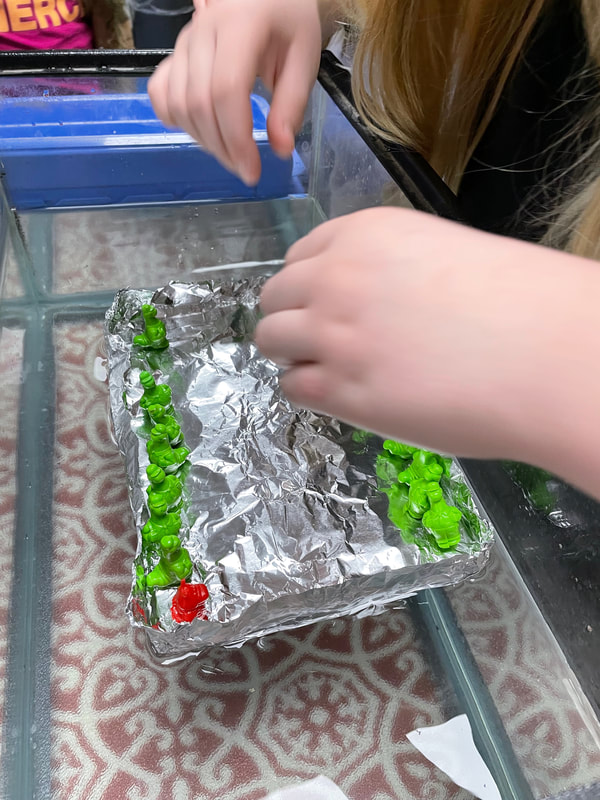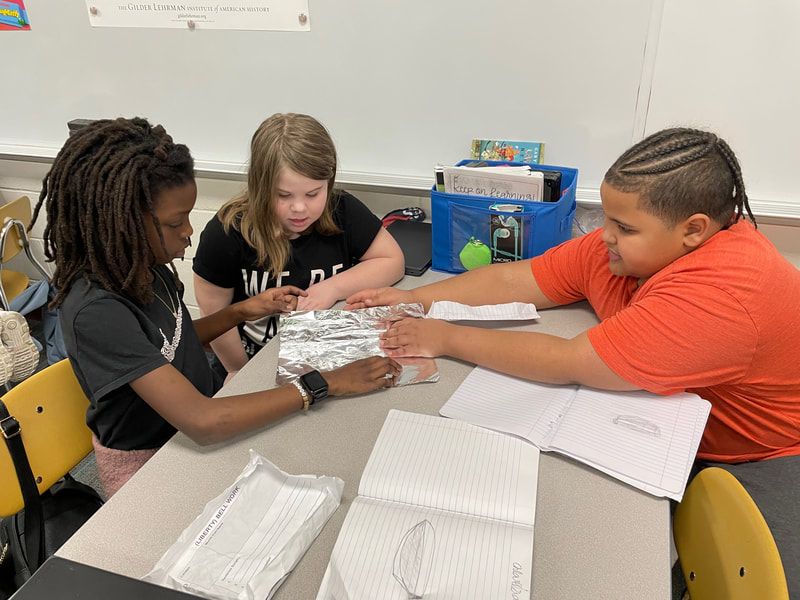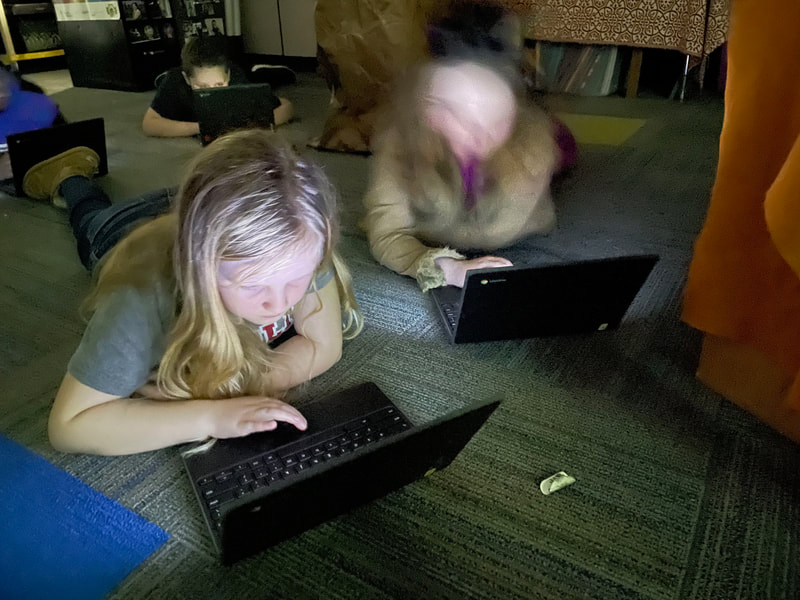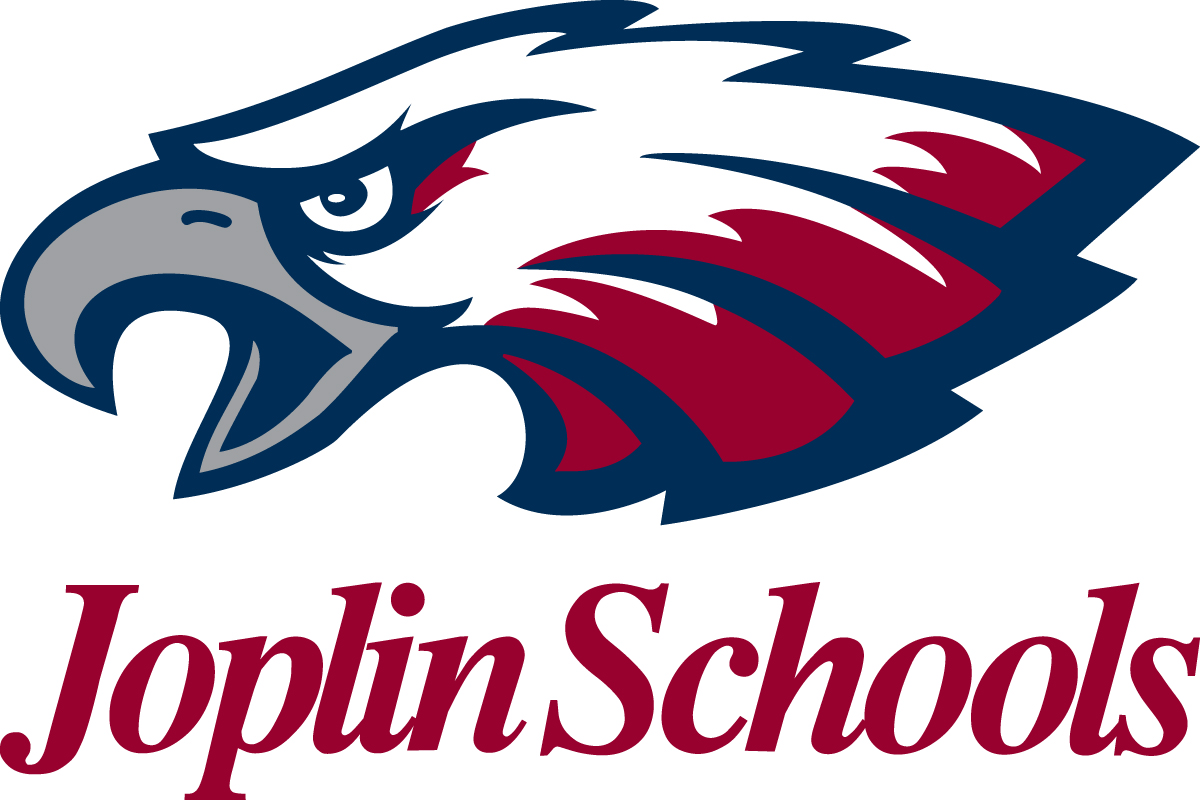|
A quick tour of our school last Friday took me through many different themes. We have yellow submarines, octopi, sharks, treasure, waves, schools of fish, a shipwreck, a Kraken (or two), jellyfish, a couple of popular and established characters, and lots of underwater views. Here is a collection of photos from before the kids arrived on Monday morning to get us started.
0 Comments
Take some seemingly-random numbers (and a couple of letters) and turn them into something meaningful. Last week, in our discovery of George Washington's spy network, students were also introduced to the Culper Code. Want to decipher it for yourself? Find the code, or a more readable version, and make it happen. Snow Day? Not for the teachers. We took the opportunity to brave the snow-pack and transform our school into something big. As far as the fourth grade hall goes, we tackled the school theme of Under the Sea from a historical point of view. What is the most infamous shipwreck? One may answer in many different ways, but our first thought was to jump into the Titanic with both feet. These pictures were taken on Friday, during and after the construction at our end of the hall. Students and parents are going to be blown away when they see our iceberg (lit up), our Titanic shipwreck, and our debris field. Students enter the area by walking beneath a tapestry that displays the Titanic in full sail. They walk beneath waves and between our displays on left and right - truly an immersive experience (See what I did there?). Other special effects - lighting, a projection, and music - will complete the experience.
One thing that sets this display apart from the rest of the school is our rich display of primary and secondary documents. Bulletin boards on both sides of the hallway display news reports, postcards, menus, and other fantastic visual items. We're giving students and visitors a chance to learn more about this infamous shipwreck. This morning is the first time that we get to see reactions from our students. We predict it's going to be something they remember for decades! Our venture into blackout poetry was pretty fun. I introduced the concept by showing completed products, then demonstrating the process before turning the class loose on their own pages.
I took pages from some books that were falling apart and passed one to each student. Students read through the page to find words that stood out to them. Once a word was found, I had them try to find other words on the page to make a sentence or thought that made sense. Blacking out the rest of the page, the poetry was all that was left. The class found this activity somewhat relaxing and challenging at the same time. It was all related to George Washington's spies, and one particular method of passing messages by means of a "mask". Remember those days when the temperature washing pushing the seventies? When was that? Oh yes - it was last week! Some Hoggatteers just wanted to catch some rays on the playground and maybe get a tan. ...But that was last week. This week we're reminded that it is still winter. Ah, but soon enough it will be spring and summer...and we still have to deal with this O. Sean Waverly fellow!
So, the minute I step out of the room, this character shows up at our school spouting off something about inventing a machine that will transform everything. I chased him away, but he insisted that he will return on Monday with the intention of converting Cecil Floyd Elementary into SEAcil Floyd Elementary. That's right, this guy says he can change everything to Under the Sea. What in the world is he thinking?
What a ridiculous concept - changing a school into an ocean! You can't just come in here and make changes like that. Something is up: that's for sure. I suppose we'll have to deal with this guy next week. Apparently his name is Oscar Sean Waverly (O. Sean Waverly to his friends), and he is a scientist/inventor whose new contraption is fueled by the imaginations of children. I hope we don't have this crazy man or any of his antics in our school. I was hoping we could have one normal week before Spring Break, but what do I know?
 The Crystal Bridges Museum of American Art has posted an entry that describes our school's involvement with a program that allowed them to write about the art and record for the displays in the museum. This particular blog post also contains the audio recordings so you may listen to EMMA's, LILY's, and EVY's wonderful interpretations of the pieces, as well as some of the students from the other classes.
 This week, we had the opportunity to connect some engineering skills with our history unit about George Washapotamus crossing the Delaware River with his Continental Dinosoldiers on Christmas night in 1776. We love to make connections! The challenge was to design a floating vessel to hold as many little green dinosoldiers) as possible. Miss Gage, our new junior intern from MSSU, helped out. In our challenge, each student sketched his/her idea. When it was time to make a prototype, groups had to choose which design elements to use. Then a sheet of aluminum foil was provided for the actual construction of the teams' ships. In a separate report (coming soon), we will see how our boat floaters fared.
Supporting QuestionsMonday How do historical interactions impact modern tensions? Tuesday How did the diversity of the Virginia populace both contribute to success and lead to conflict? Wednesday When does a rebellion become a revolution? Thursday What did the competing groups in the new nation expect from independence? Friday How is freedom defined and valued by the different groups in America? Saturday How has the meaning of “American” evolved over time? “Every step forward begins
with a foot planted firmly in the past." (Auggie Anderson, Covert Affairs) While that popular movie made the Declaration of Independence a source of suspicion and conspiracy, there are facts and fictional tales involving our founding document. There are still plenty of real mysteries in history, and that's exciting! Decisions, decisions. It is the winter of 1776 and 1777. The Continental Army has lost more battles than it has won. It has retreated more often than it has charged. Confidence in Commander-in-Chief George Washington is waning. Soldiers are quitting, their tours of duty are due to end. The Patriots really need a win... or better yet, a series of wins. If that can happen, it will offset the losses just enough to embolden the Americans, dishearten the Redcoats and the Hessians, and encourage the French to support the Continental cause. How hard do you think it was for Washington to make his military decisions during this winter? How long did he have to weigh his options?
 C-O-L-L-A-B-O-R-A-T-I-O-N. There's a word that came into popularity in education a few years ago - the years that I was ready to pack it in as a teacher and let administration figure out what to do with the kids. The top-down leadership was really a dictatorship, and any dissention was unwelcome. We were literally being told what our facial expressions should be. I was scolded by the principal that I had to put the toilet seat down - in the men's room! - because it wasn't "aesthetically pleasing". But I digress... Collaboration is back. At a recent "professional development", teachers were asked the same question four different ways: "How does collaboration benefit teachers?" The ideas being presented (and the ideas our administrators predetermined they wanted) indicated that it was beneficial for everyone to be on the same page. Someone said it was negative for teachers to have different personalities, and I had to speak up. No, I said. Differences are a positive! People agreed. They weren't going to say it until they knew someone else believe the same way. You see, when distrust is in the room, collaboration is dishonest. The district will never get fresh ideas and true collaboration when this is true. When teachers are not vulnerable, they will not advance, and if teachers do not trust their administrators, they will rarely put themselves at risk. We could be heading right back to the place we were when I was ready to walk out. It seems that one common thread is this collaboration thing. It sounds great, and it should be great, but it has become a smokescreen word for something else. The problem is in the presentation of the wrong kind of question to the group. True collaboration is more open-ended and oriented toward problem-solving, but here's how it's presented instead: "Here is how we've determined you must teach, what you must teach, how you must teach, and when to teach it. Now collaborate about it." What's that? The so-called collaboration is merely a dissemination of information and proclamations with which teachers are expected to agree. "Collaboratively." There is no room for disagreement. There is no call for innovative ideas. There is no openness for honest answers or true problem-solving. In other words, I don't think collaboration means what you think it means. Read more Professional Pet Peeves.
|
AnthemThe Hoggatteer Revolution
is an extensive, award-winning, inimitable, digital platform for Encouraging and Developing the Arts, Sciences, and honest Christianity in the beautiful, friendly LAND OF THE FREE AND THE HOME OF THE BRAVE This site is described as
"a fantastic site... chockablock full of interesting ideas, hilarious anecdotes, and useful resources." 
...to like, bookmark, pin,
tweet, and share about the site... and check in regularly for new material, posted often before DAWN'S EARLY LIGHT! History in ResidenceElementary Schools: Bring Mr. Hoggatt into your classroom for a week of engaging and rigorous history programming with your students. LEARN MORE BUILDING BETTER
|

